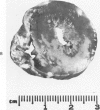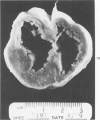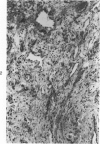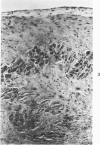Abstract
Relatively few cases of myocardial infarction associated with coronary artery atherosclerosis have been described previously in macaques. In this study the authors report the prevalence and characteristics of coronary artery atherosclerosis and myocardial infarction in 10 rhesus (Macaca mulatta) and two cynomolgus (Macaca fascicularis) macaques that were fed atherogenic diets for 16 months or longer. Our findings show clearly that myocardial infarction occurs in macaques with diet-induced atherosclerosis. The frequency seems to be related to the species, composition of the atherogenic diet, and length of time fed the atherogenic diet. The myocardial lesions are remarkably similar to those described in human beings in terms of location and gross and microscopic characteristics. The characteristics of coronary artery atherosclerosis, including the occurrence of thrombosis, severe stenosis, mineralization, atheronecrosis, and sterol clefts, especially in animals fed the atherogenic diets for longer periods of time, also closely resemble those of the arterial lesions found in human beings. The greatest prevalence of myocardial infarcts was found in rhesus monkeys fed a cholesterol-containing diet with 40% of calories supplied by peanut oil and in cynomolgus macaques from Malaya that were fed the same amount of cholesterol with 40% of calories from lard. Electrocardiographic abnormalities as well as the occurrence of unexpected and relatively sudden death in several of these nonhuman primates are also consistent with signs frequently observed in human beings.
Full text
PDF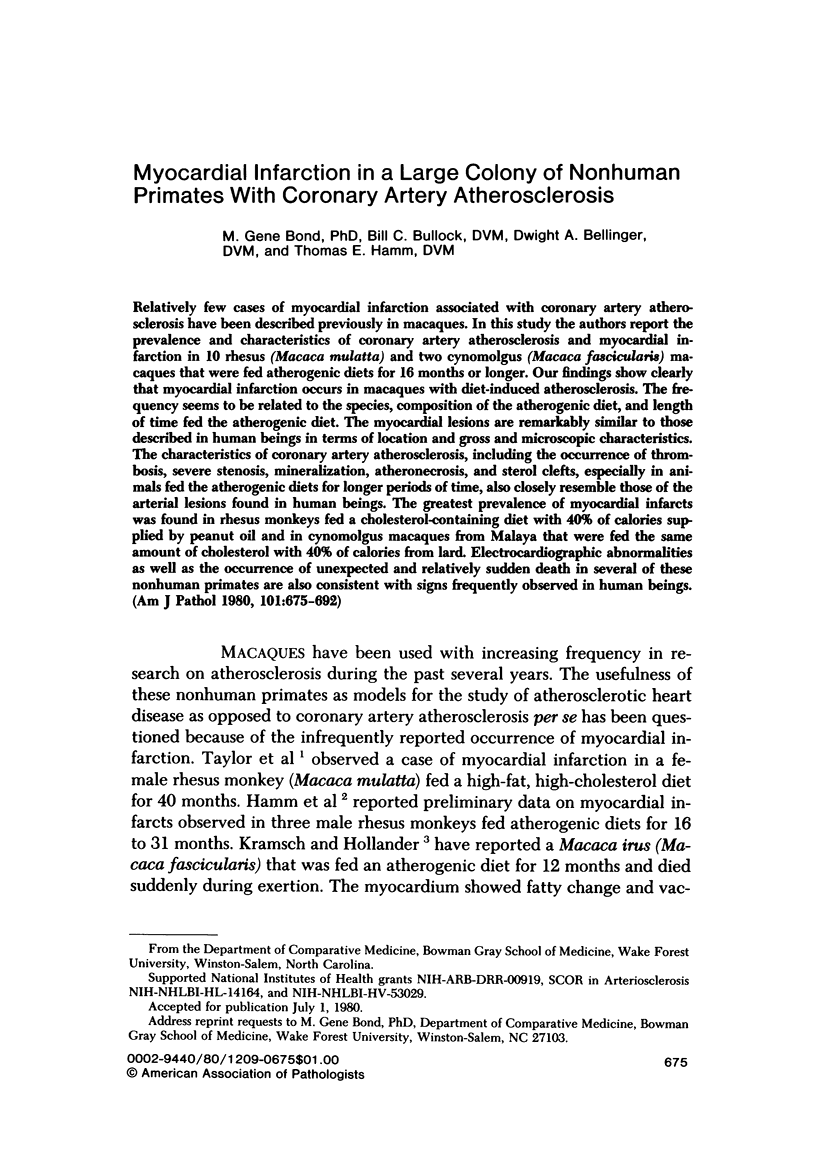
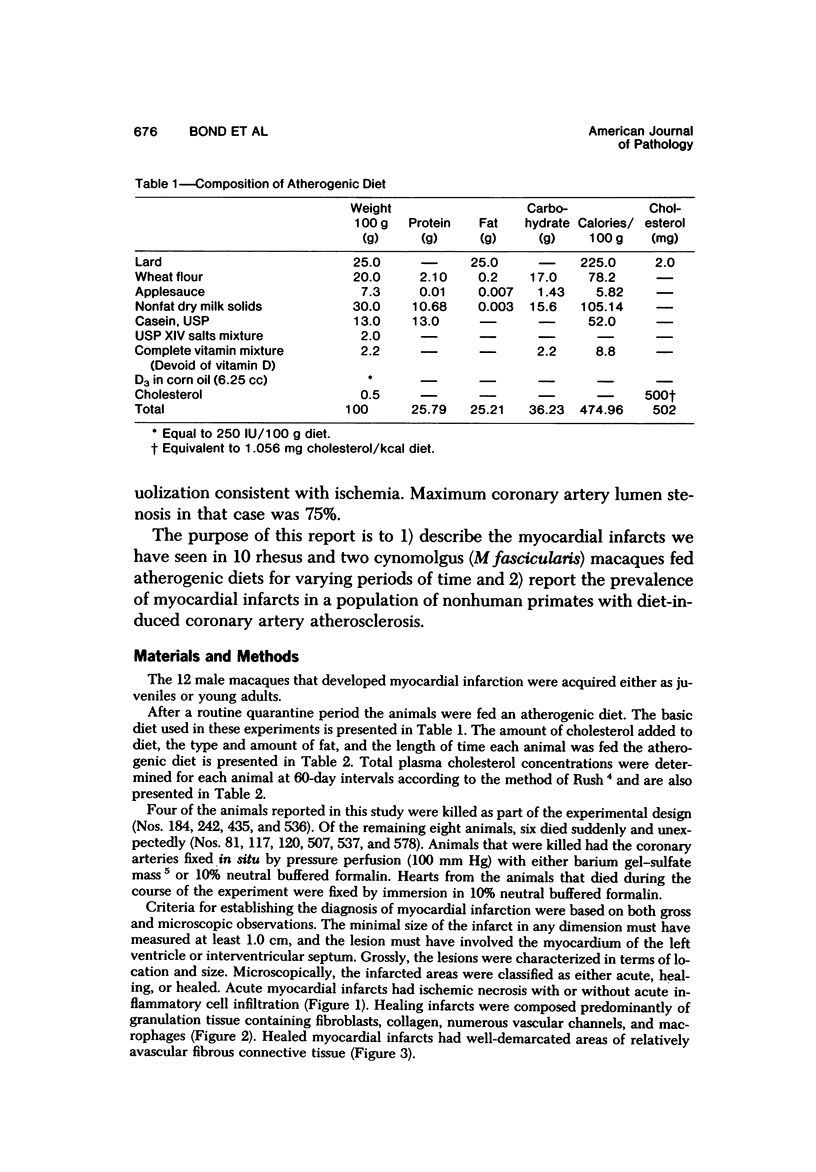
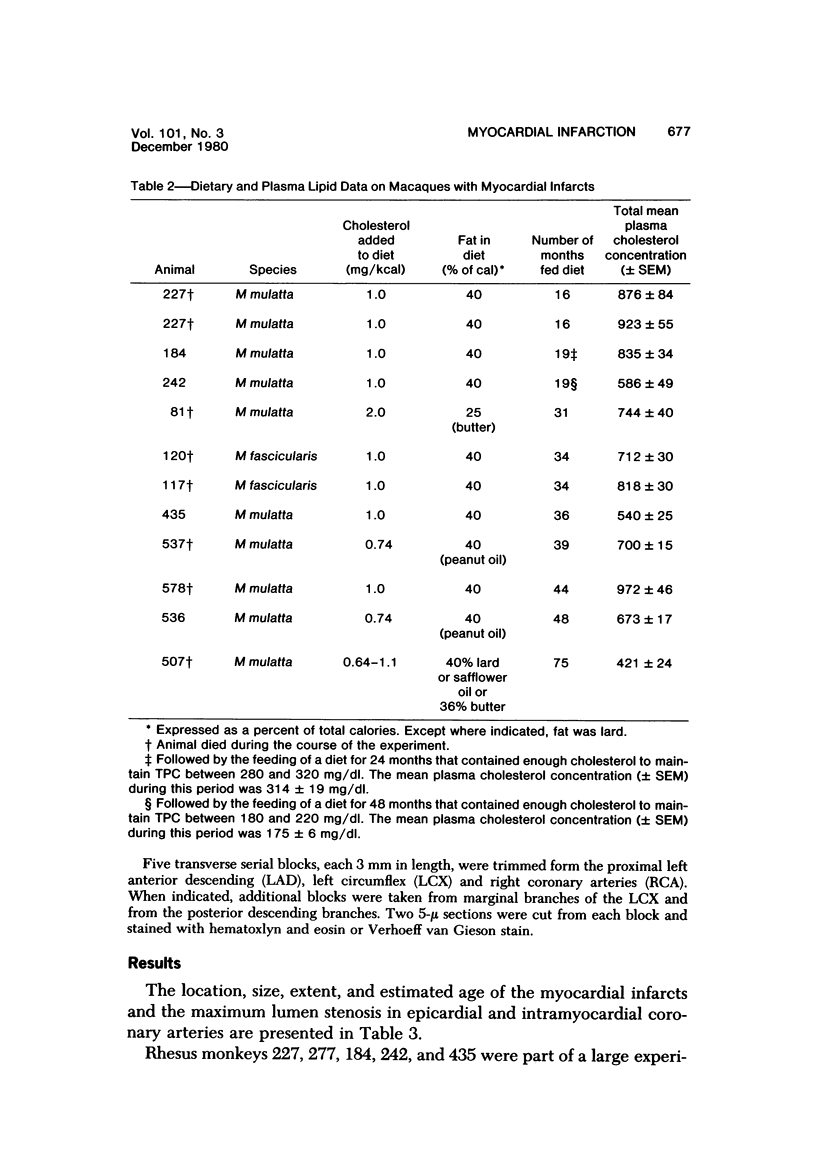
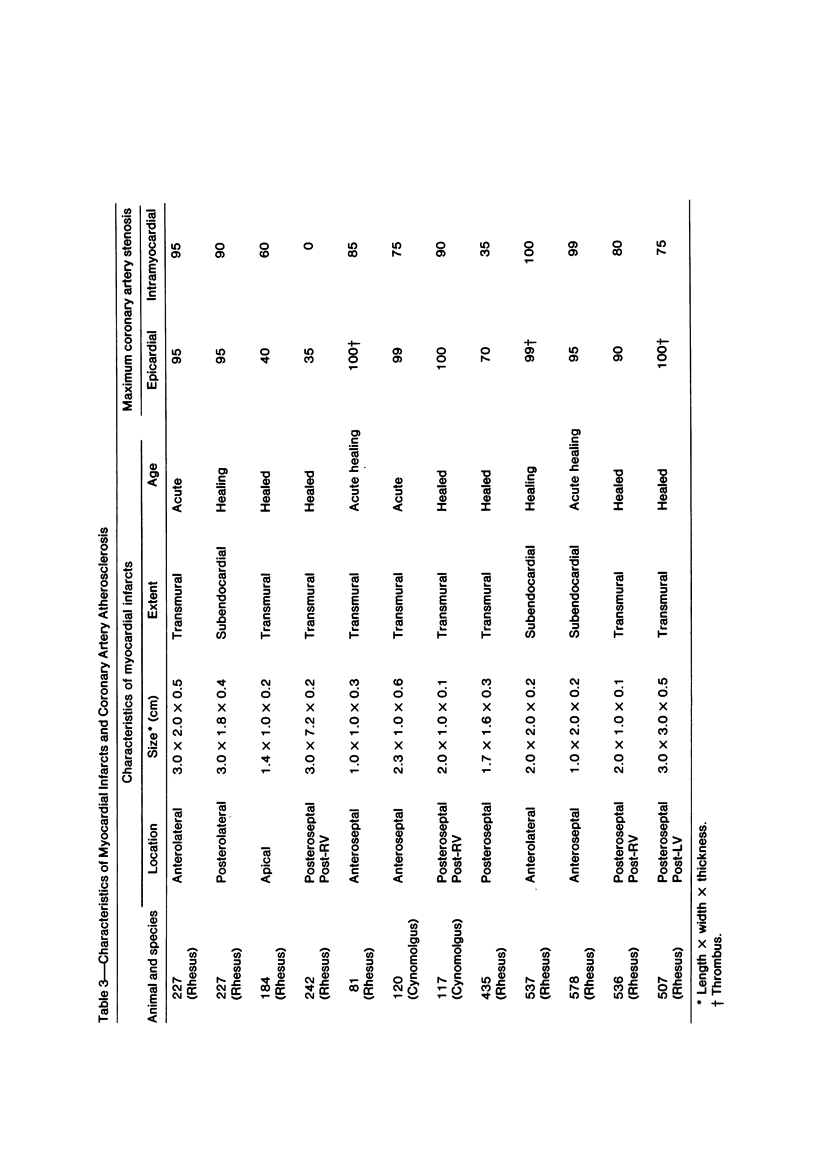
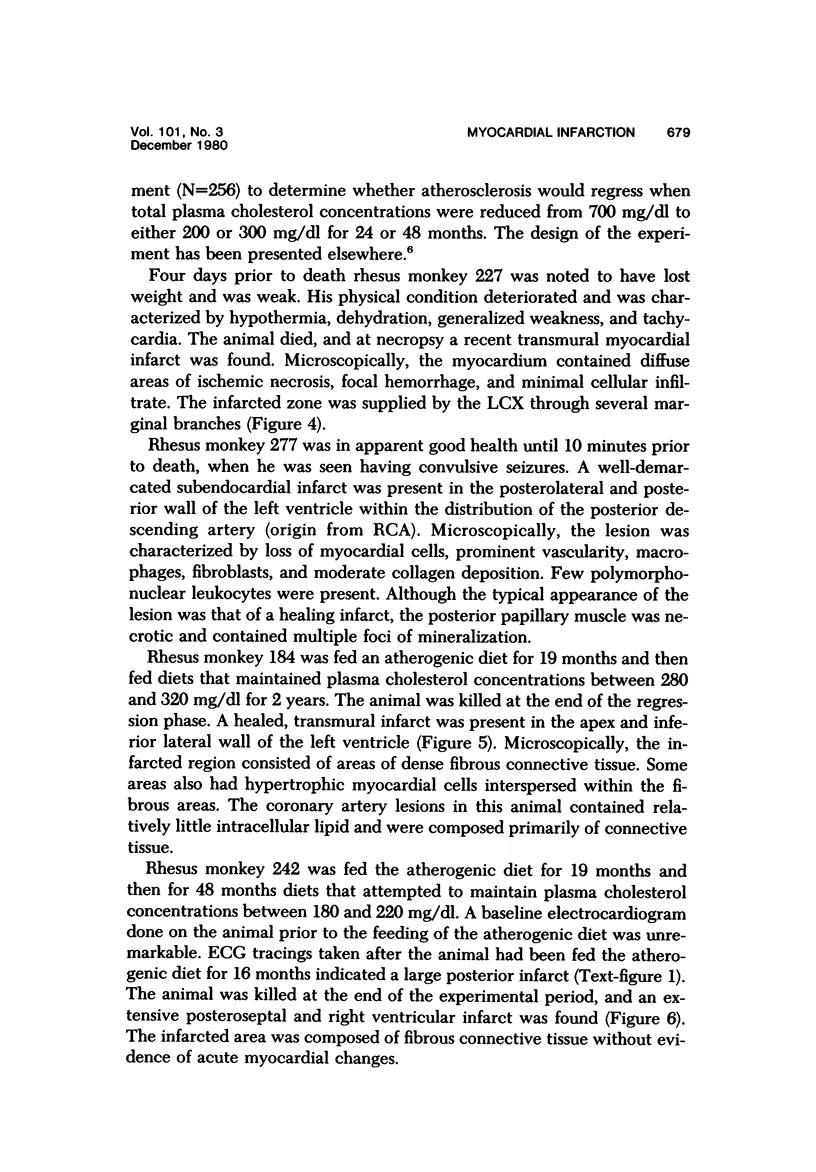
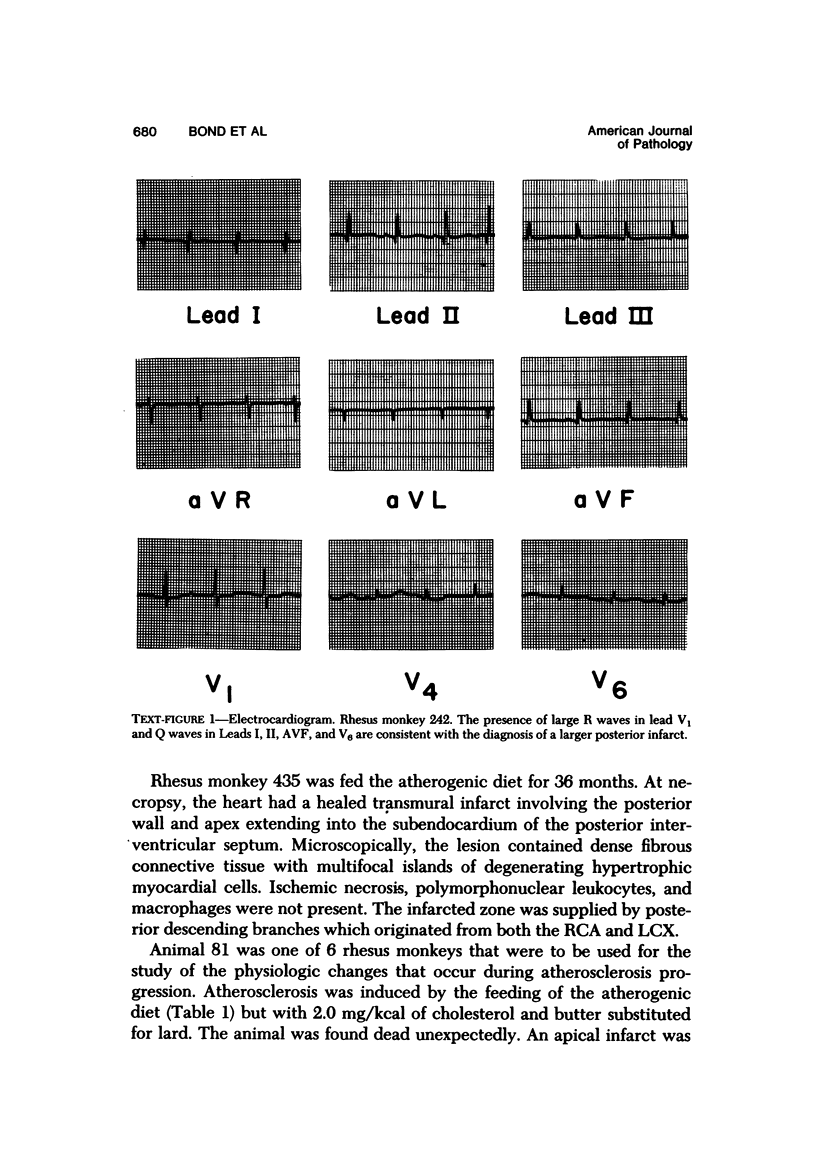
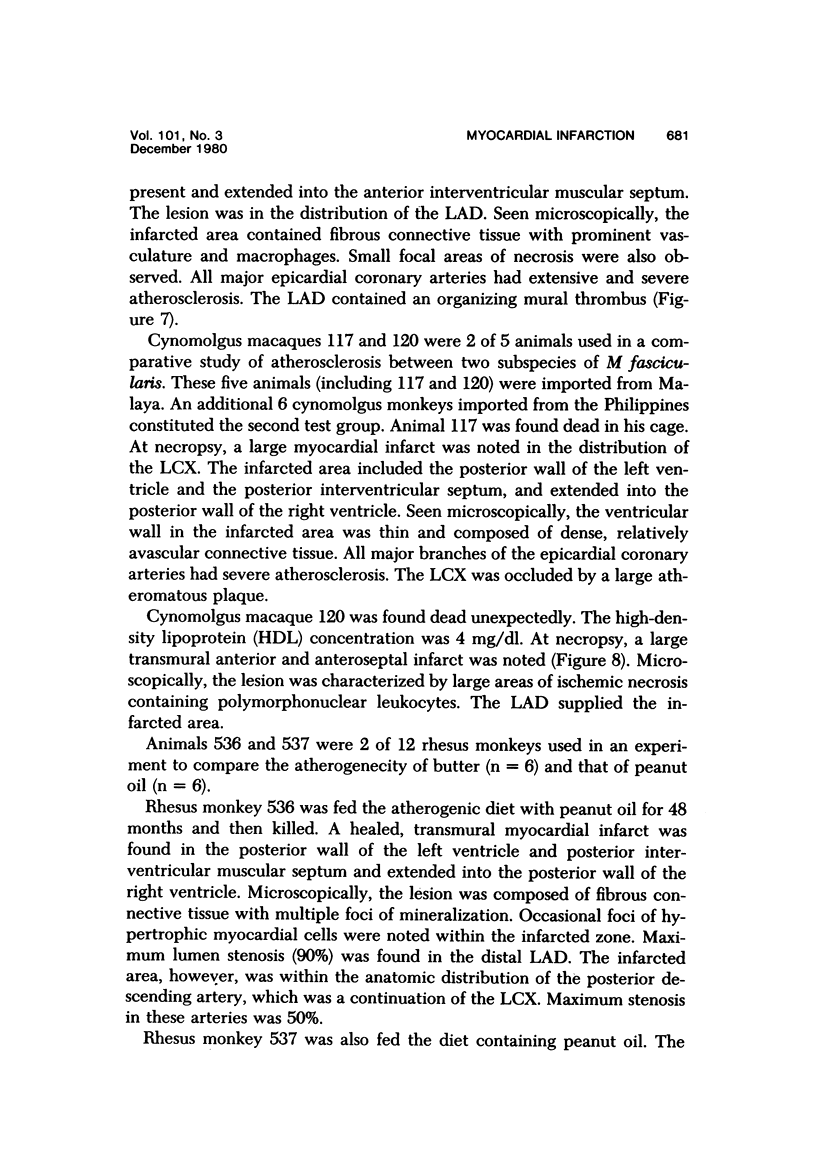
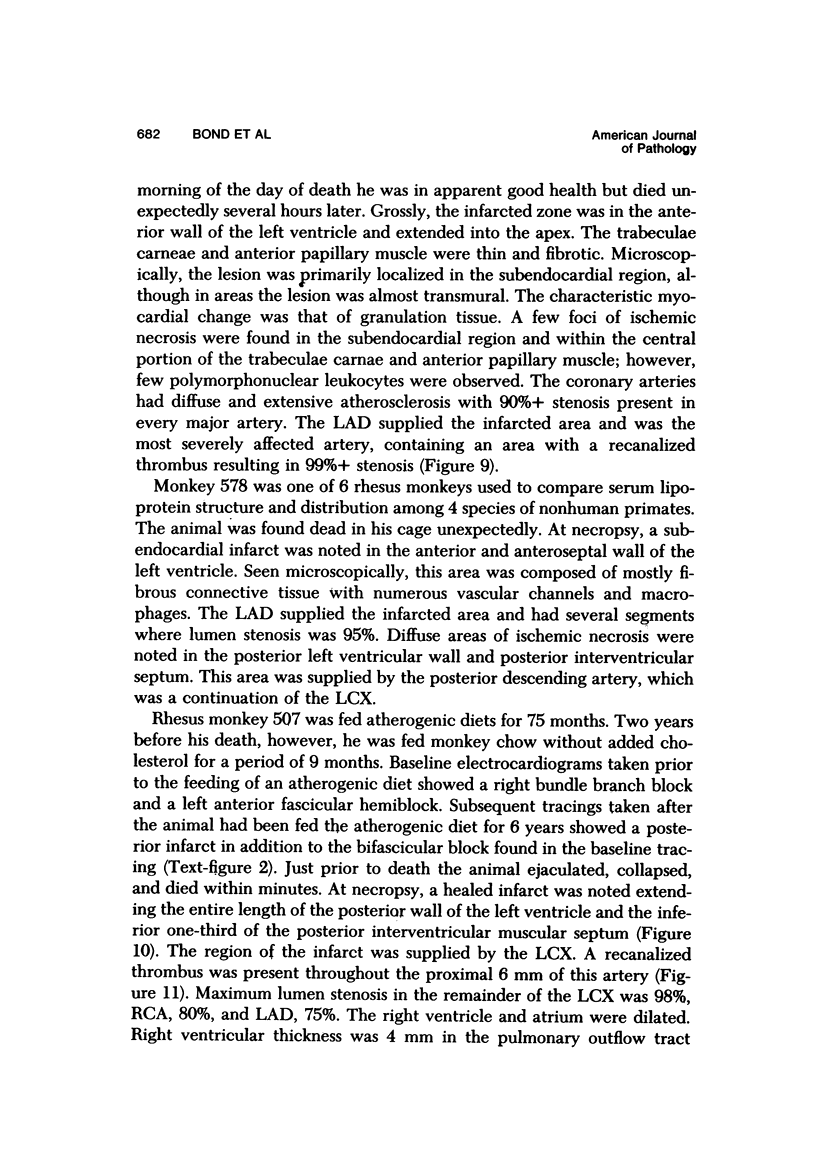
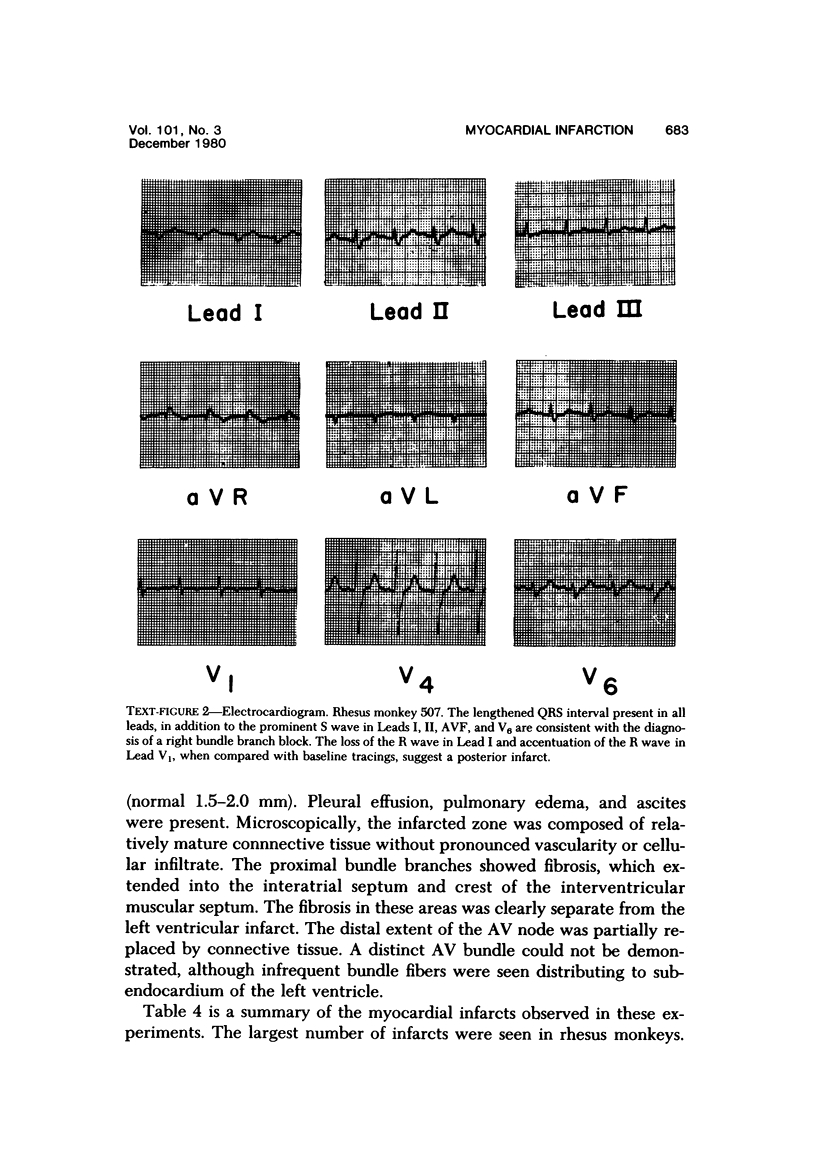
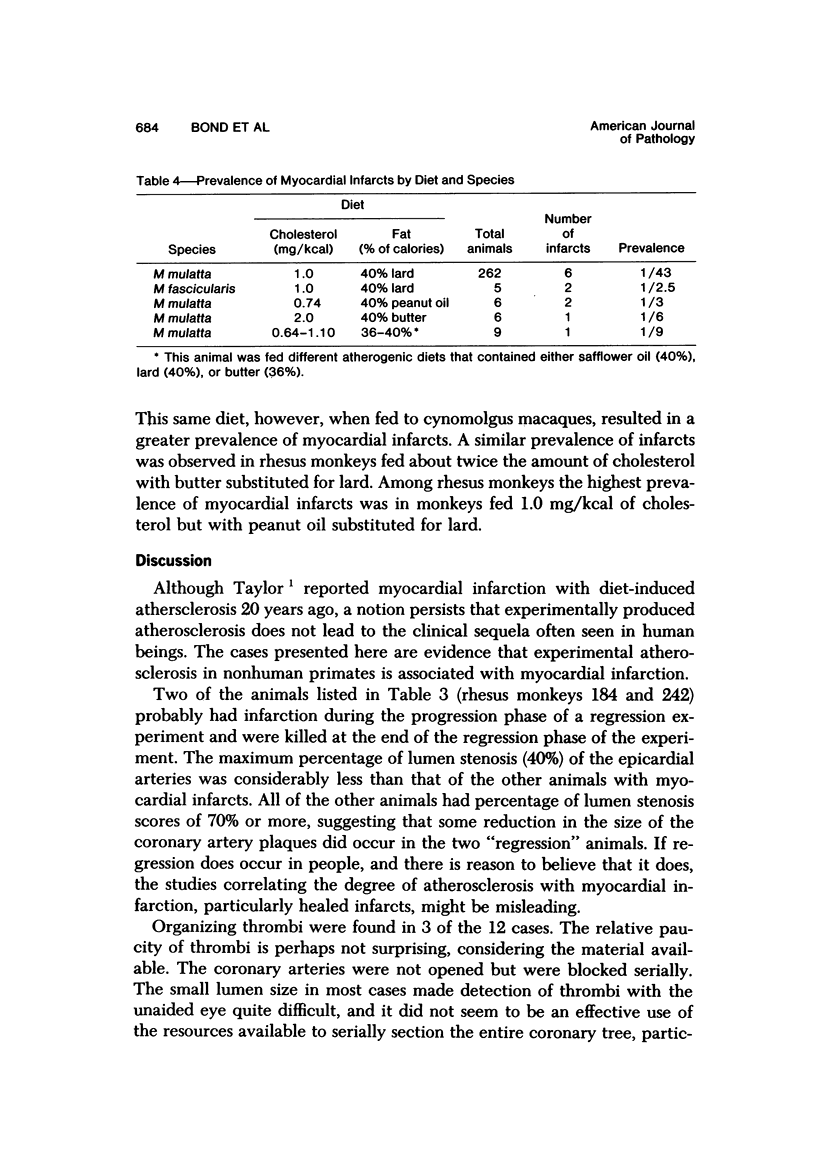
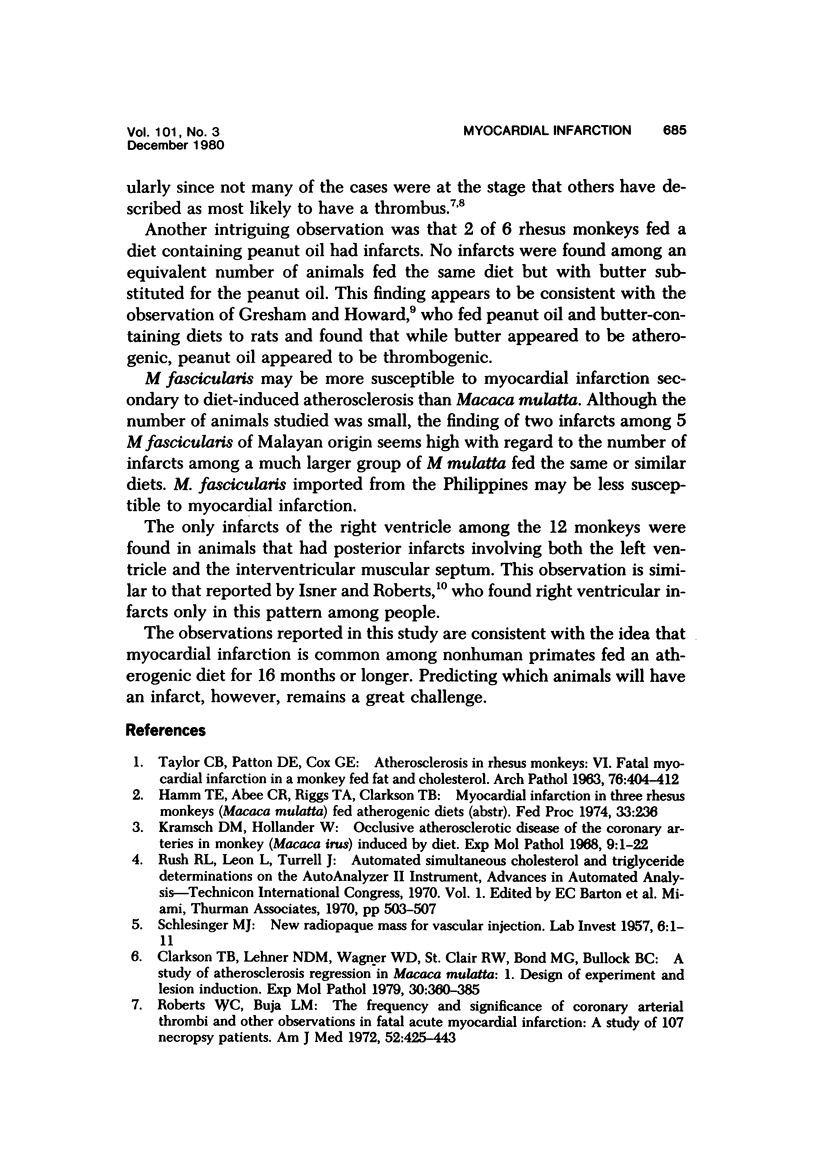
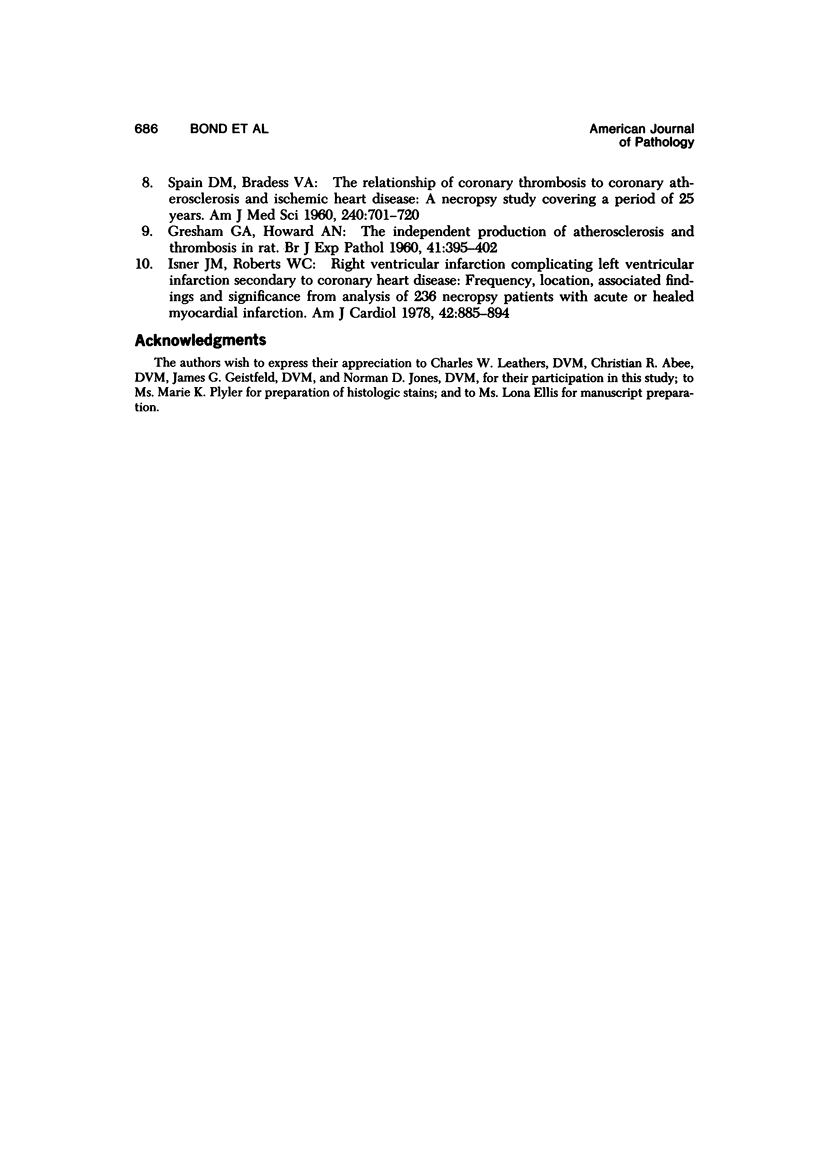
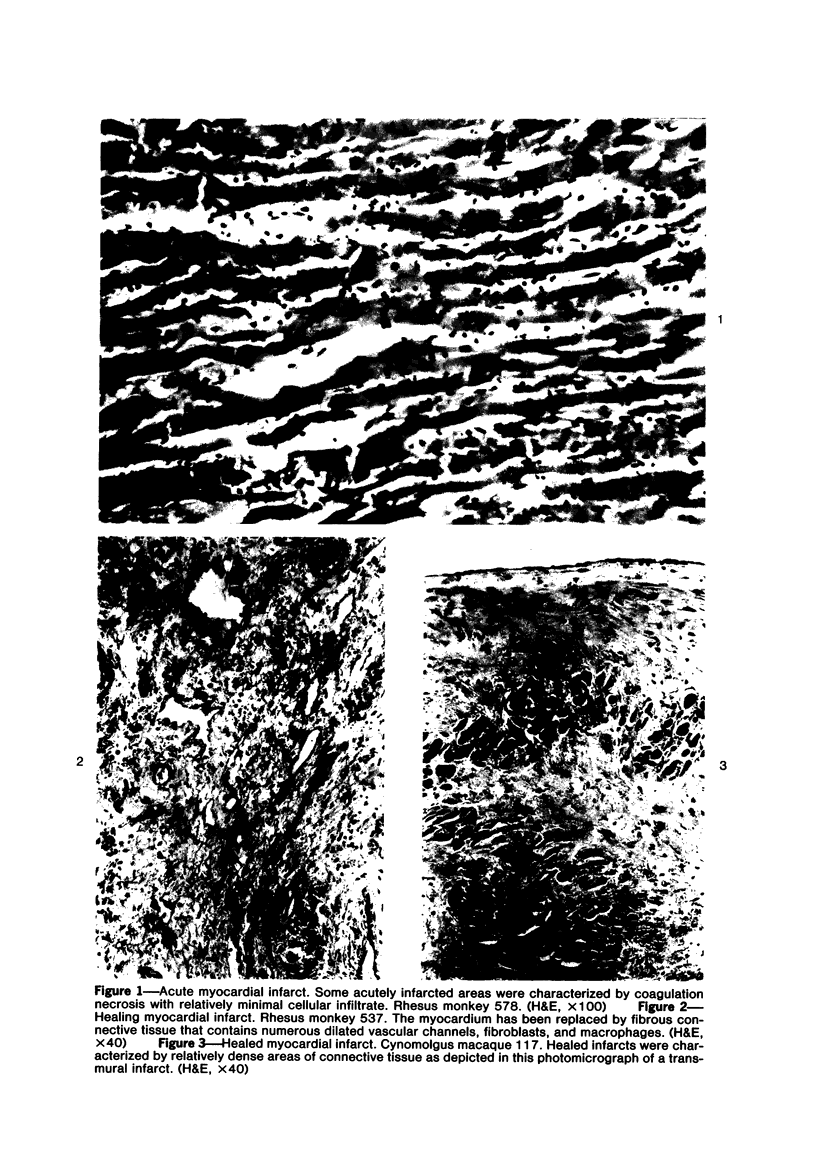
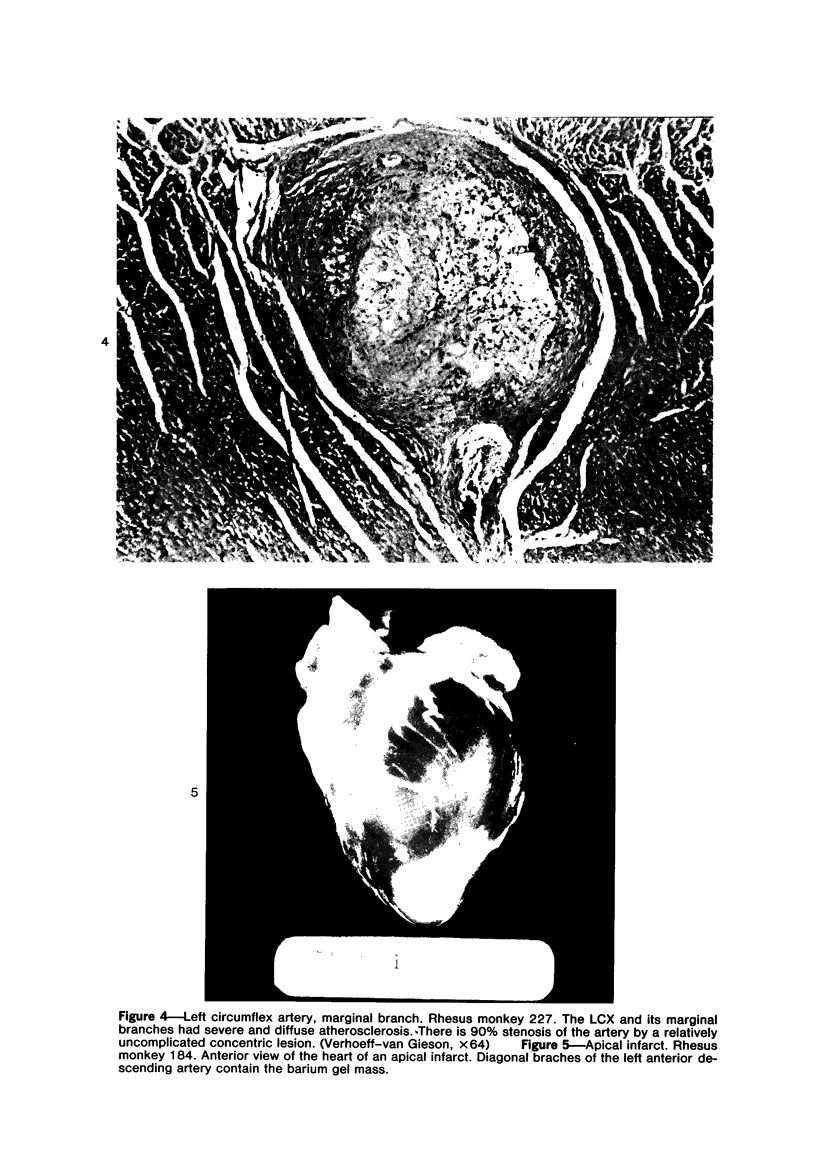
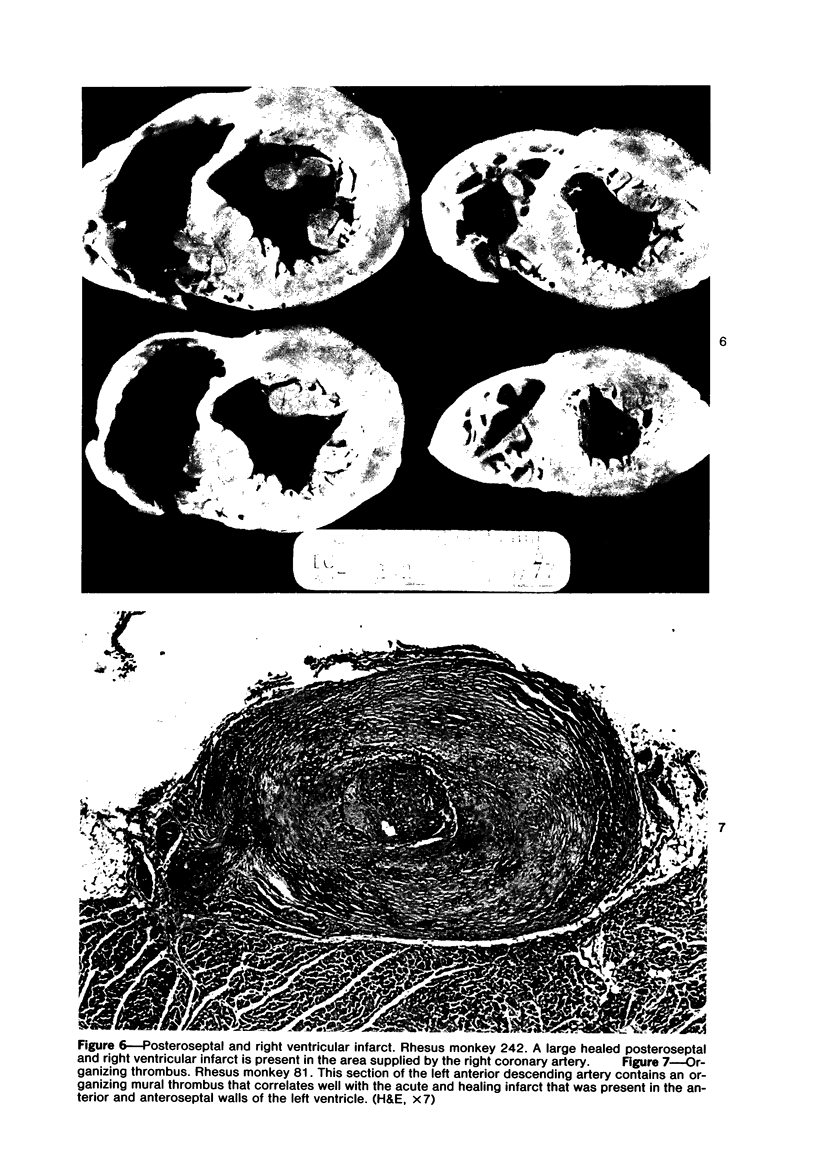
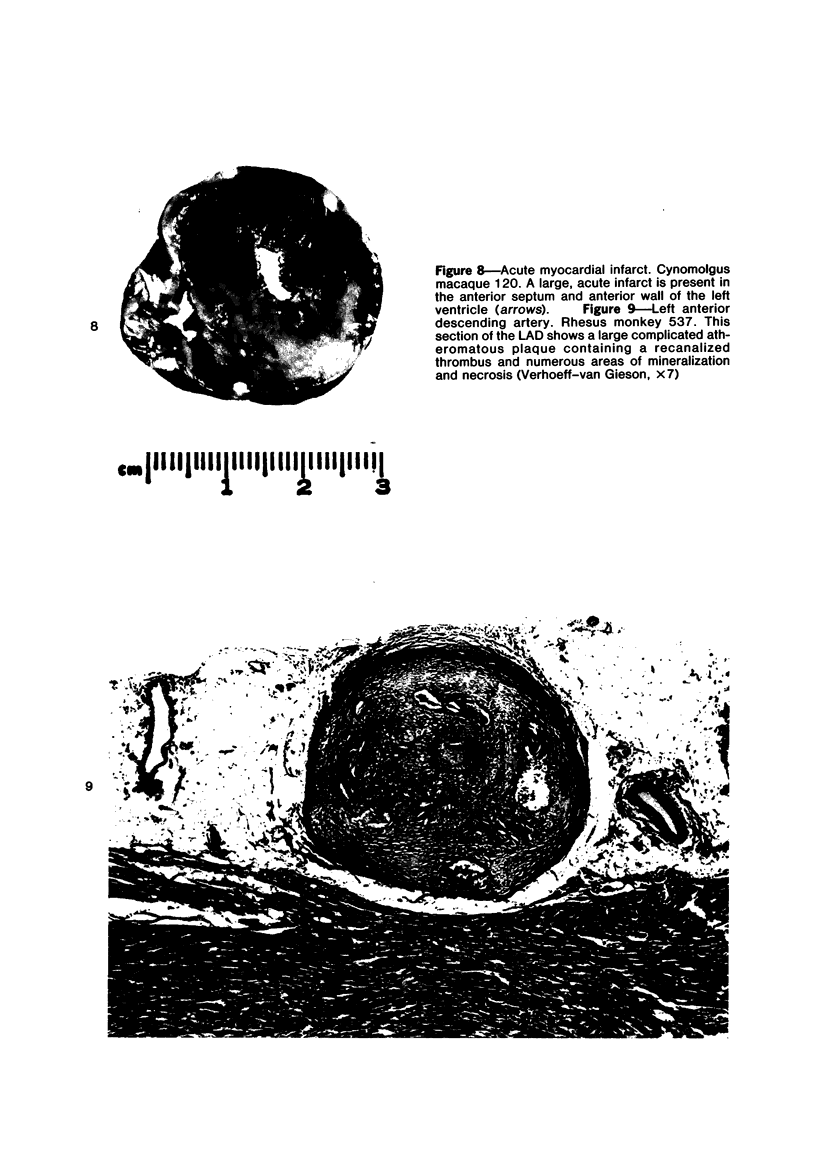
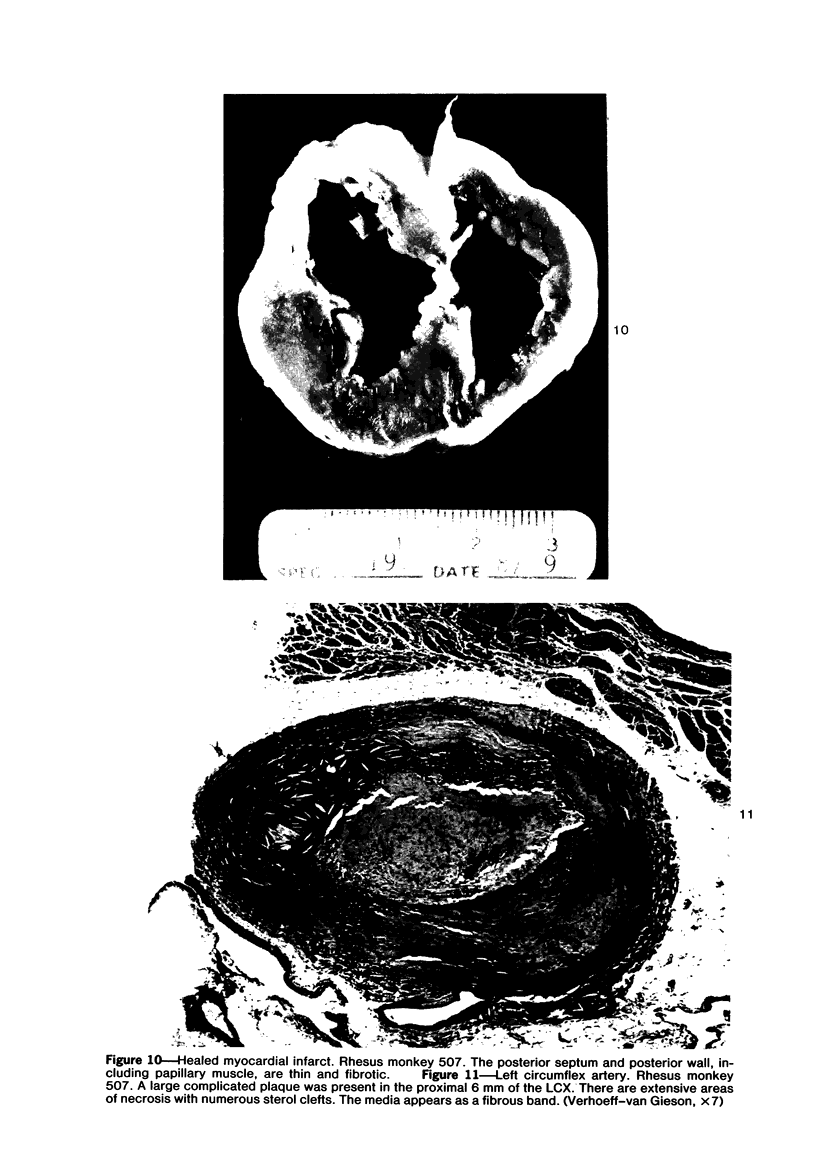
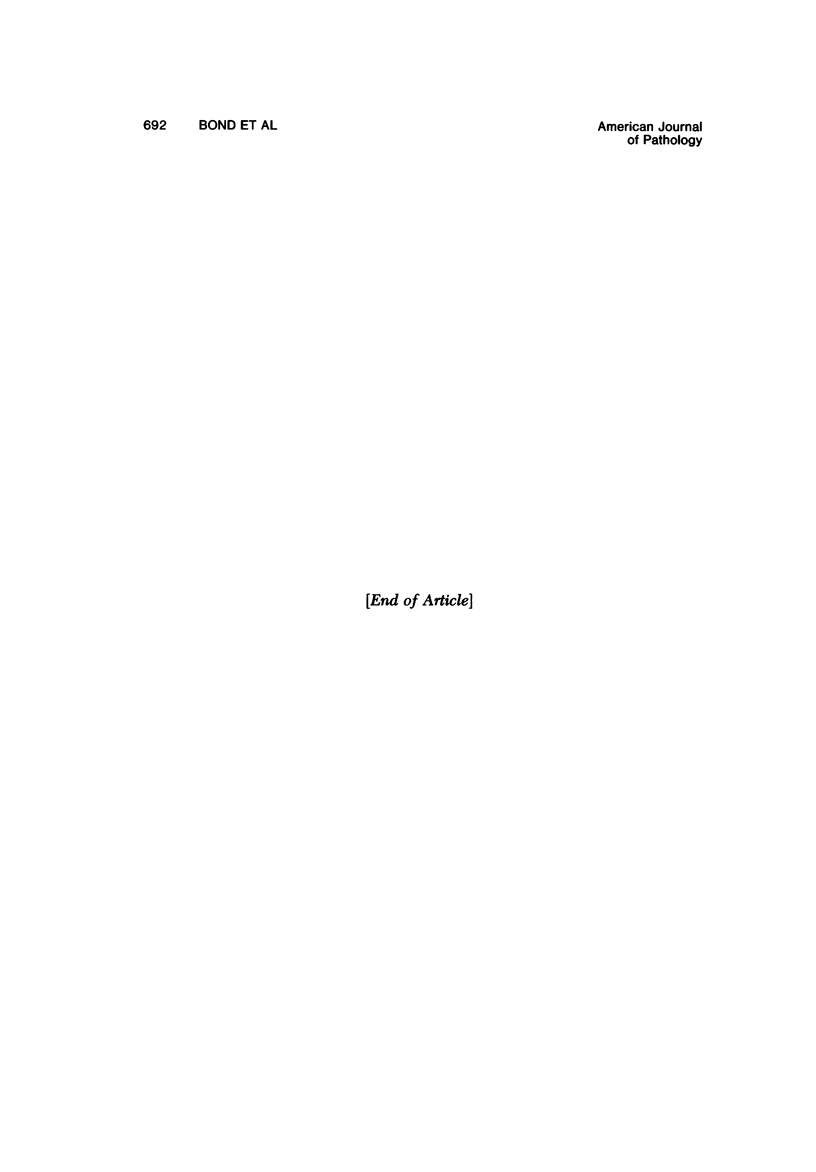
Images in this article
Selected References
These references are in PubMed. This may not be the complete list of references from this article.
- Clarkson T. B., Lehner N. D., Wagner W. D., St Clair R. W., Bond M. G., Bullock B. C. A study of atherosclerosis regression in Macaca mulatta. I. Design of experiment and lesion induction. Exp Mol Pathol. 1979 Jun;30(3):360–385. doi: 10.1016/0014-4800(79)90090-x. [DOI] [PubMed] [Google Scholar]
- GRESHAM G. A., HOWARD A. N. The independent production of atherosclerosis and thrombosis in the rat. Br J Exp Pathol. 1960 Aug;41:395–402. [PMC free article] [PubMed] [Google Scholar]
- Isner J. M., Roberts W. C. Right ventricular infarction complicating left ventricular infarction secondary to coronary heart disease. Frequency, location, associated findings and significance from analysis of 236 necropsy patients with acute or healed myocardial infarction. Am J Cardiol. 1978 Dec;42(6):885–894. doi: 10.1016/0002-9149(78)90672-0. [DOI] [PubMed] [Google Scholar]
- Kramsch D. M., Hollander W. Occlusive atheroslcerotic disease of the coronary arteries in monkey (Macaca irus) induced by diet. Exp Mol Pathol. 1968 Aug;9(1):1–22. doi: 10.1016/0014-4800(68)90045-2. [DOI] [PubMed] [Google Scholar]
- Roberts W. C., Buja L. M. The frequency and significance of coronary arterial thrombi and other observations in fatal acute myocardial infarction: a study of 107 necropsy patients. Am J Med. 1972 Apr;52(4):425–443. doi: 10.1016/0002-9343(72)90033-2. [DOI] [PubMed] [Google Scholar]
- SCHLESINGER M. J. New radiopaque mass for vascular injection. Lab Invest. 1957 Jan-Feb;6(1):1–11. [PubMed] [Google Scholar]
- TAYLOR C. B., PATTON D. E., COX G. E. ATHEROSCLEROSIS IN RHESUS MONKEYS. VI. FATAL MYOCARDIAL INFARCTION IN A MONKEY FED FAT AND CHOLESTEROL. Arch Pathol. 1963 Oct;76:404–412. [PubMed] [Google Scholar]





